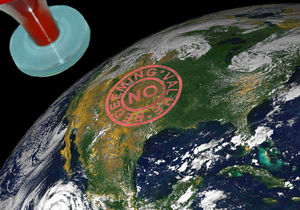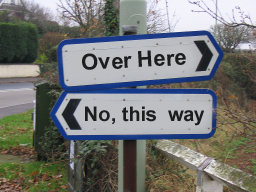HowTo:Make your Uncyclopedia article appear longer than it really is/unreadable
If you cannot read this article, but can read this text, click here.
“Oscar Wilde quotes are a great way to waste space”
– Oscar Wilde on making an Uncyclopedia article seem longer than it really is
“Indeed!”
– Someone else on Oscar Wilde quotes being a great way to make an Uncyclopedia article seem longer than it really is
Making an Uncyclopedia article seem longer than it really is may seem like a rather daunting task, but it is in fact one that can be easily mastered by following the steps outlined herein.
Reasoning behind wanting to make an Uncyclopedia article seem longer than it really is[edit | edit source]
Why on earth would you want to make your Uncyclopedia article seem longer than it really is? There are several reasons, most of which will be outlined here (see HowTo:Make your Uncyclopedia article appear longer than it really is#Inclusion of redundant, irrelevant, and/or unnecessary lists):
- Shorter pages are often marked as having no redeeming value when they are not particularly funny while longer pages tend to avoid such a fate.
- If your article is funny, being longer will increase its chances on Uncyclopedia's Votes for Highlight page, or VFH, a place where users vote on which articles should be briefly featured on the main page.
- You are lazy and don't want to spend a long time writing something long and meaningful.
- The subject of your article is much too broad to facilitate a long examination.
- You send emails with 50-word questions as the subject line.
- Other.
Choosing an unnecessarily long article title[edit | edit source]
The first step to making an Uncyclopedia article seem longer than it really is is to choose a long title. Be sure to always write the title out completely when mentioning it in the article, never substituting an abbreviation or pronoun.
Dividing text into small sections[edit | edit source]
The next step in making your Uncyclopedia article seem longer than it really is is the separation of the article into tiny chunks, each no longer than several sentences. Each chunk is then given its own section, preferably also with a long title. Inclusion of 3 or more sections is highly recommended, as this will create a table of contents on the page which will add to its length considerably.
Adding sub-sections for even more article length[edit | edit source]
Second- or even third-level sections are highly desirable because they need not contain a large amount of information but still contribute to the Table of Contents and overall length of your article which you are trying to make appear longer than it really is.
[edit | edit source]
Making use of thumbnail images with long captions can help lengthen your Uncyclopedia article slightly, but for best results full size images are recommended.
Full size images[edit | edit source]
Full size images are images that are added to the article at without the thumbnail option, resulting in images appearing at their full size. These kinds of images are incredibly good at occupying tremendous amounts of space and should be used at every opportunity.
Expressing simple ideas in a confusing and draw-out manner[edit | edit source]
When faced with the challenge of expressing ideas, usually expressing them in a manner that is short and concise is preferable. This is not the case when you need to make your Uncyclopedia article appear longer than it really is. Be certain to word your ideas in the longest-winded manner possible, including specific examples when none are actually required for the reader to understand the idea you are attempting to convey. If the opportunity presents itself, be certain to explain trivial definitions and concepts in excruciatingly vivid detail within the article itself rather than wiki-linking, or adding square brackets around words to point readers unfamiliar with the subject to an article that better explains it; your goal should be for the reader to not remember or be able to extract the main idea of each sentence by the time they finish reading it.
Given a simple idea such as
Ideas should be expressed in the longest form possible.
one can mash a vast amount of unnecessary words in so that the idea seems much more complicated and most importantly, longer:
When attempting to convey an idea in written form on your Uncyclopedia article that you are trying to make seem longer than it really is, the best strategy is to insert large amounts of superfluous information which is completely unnecessary for the idea being conveyed to be properly understood by the reader.
Success! In the latter example presented here, the number of words used to express the idea, or the word count, has been increased sixfold.
Self-contradiction[edit | edit source]
Additionally, self-contradiction is a clever, and original way to lengthen an your Uncyclopedia article's appearance.
Avoid self-contradiction[edit | edit source]
Self-contradiction only lengthens an article by a small factor, but is considered a cheap gimmick which has been done to death.
Inclusion of redundant, irrelevant, and/or unnecessary lists[edit | edit source]
Lists occupy the maximum amount of vertical space while presenting the least amount of information. Because of this they can easily be used to significantly increase the length of your Uncyclopedia article which you are trying to make seem longer than it really is.
- When there are two or three examples of an idea, be sure to use a list rather than expressing them inline with the relevant article text.
- Reiterating ideas already expressed inline can be combined with lists for massive damage.
- If presented creatively, loosely related or even completely unrelated items can be added to lists to get the most mileage out of them.
- Always add "other" to each list, this acts as a freebie and is almost always justifiable.
- Other.
Reiteration of unnecessary examples outside of list form can also prove extremely useful. "YES IT CAN!"
Tweaks and/or tips to help make your Uncyclopedia article seem even longer[edit | edit source]
That scrollbar on the right side of the edit box should be getting mighty long by now, but here are some other tips on how to squeeze some extra scrollbar length from the Uncyclopedia article you are trying to make seem longer than it really is.
- Try adding {{:Long_article}}. Better yet, add it several times.
- See Also sections are another great opportunity to use a list. Be sure to link to as many other articles as you can find. This is your moment to shine - often each item will only be one world long, so this kind of list is the most efficient and should be as long as possible.
- Templates can often be used to provide that small extra boost your article needs.
- Adding the article to a large amount of catch-all categories will create the appearance that you took the time to think out what you were writing, helping convince the reader that the garbled mess of information you are presenting as an article is somewhat meaningful.
- Making subtle references to Uncyclopedia in-jokes can act as a clever disguise for nonsense you can't hide in any other manner.
- Quotes are another great space-waster.
- Other.
See also[edit | edit source]
- An article thats not really that long on closer inspection, but could be longer if it used words of a nature that don't really make any sense to the article in question and just start to make a sort of random speech and somehow carry on the speech without needing a period, full stop or any other kind of sentence stopping device, but will inevitable need one as the speech will just keep going on and on and on and on and.... you know what I mean.... oh wait does that count as a period?? < that does!! PERIOD FULL STOP.... ETC....
- HowTo
- Redundancy
- Oscar Wilde
- Black people
- How to be funny and not just stupid
- How to be stupid and not just funny
- Windows XP
- Euroipods
- Main Page
- Redundancy
- You
- VFH
- AAAAAAAAA!
- I Fucking Hate the Bermuda Triangle
- Uncyclopedia is the worst
- Drugs
- Sophia
- Uncyclopedia
- Cream of the long article crop
- Redundancy
- Village Dump
- This
- Can
- Also
- Help
- You
- In
- Your
- Quest
- To
- Make
- Articles
- Appear
- Longer
- Than
- They
- Really
- Are
- Trust
- Me
- Other.




